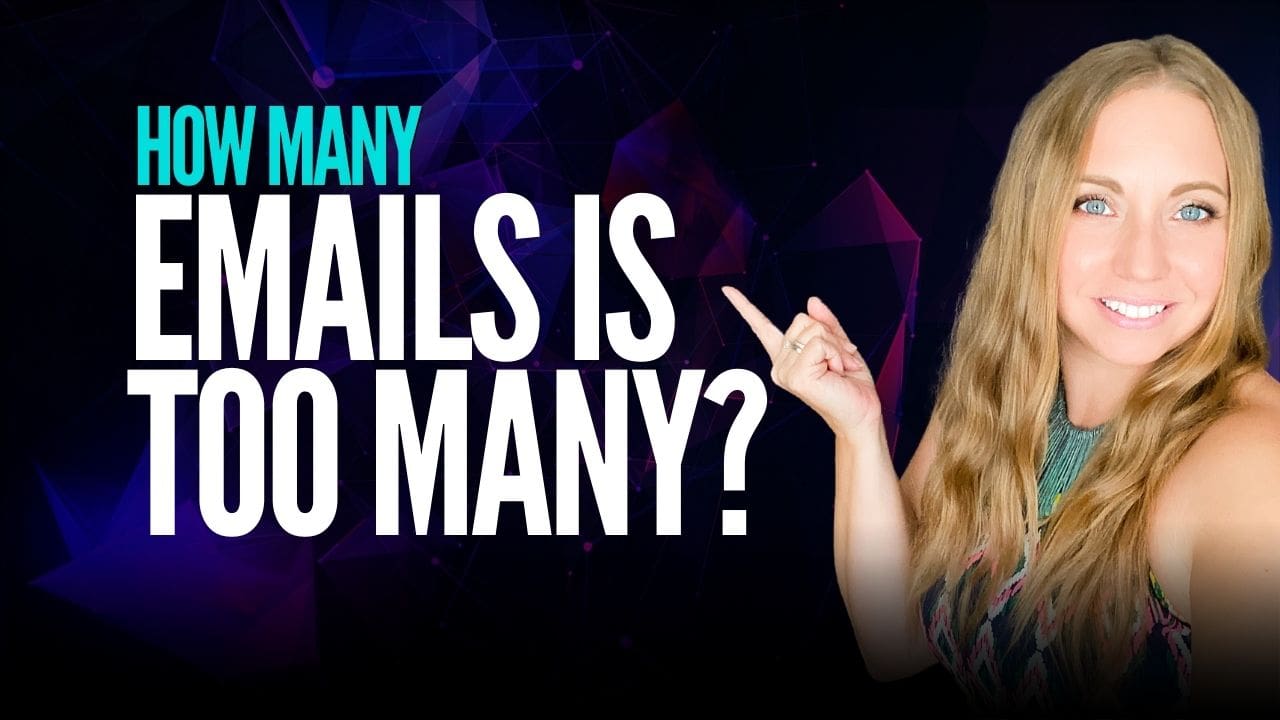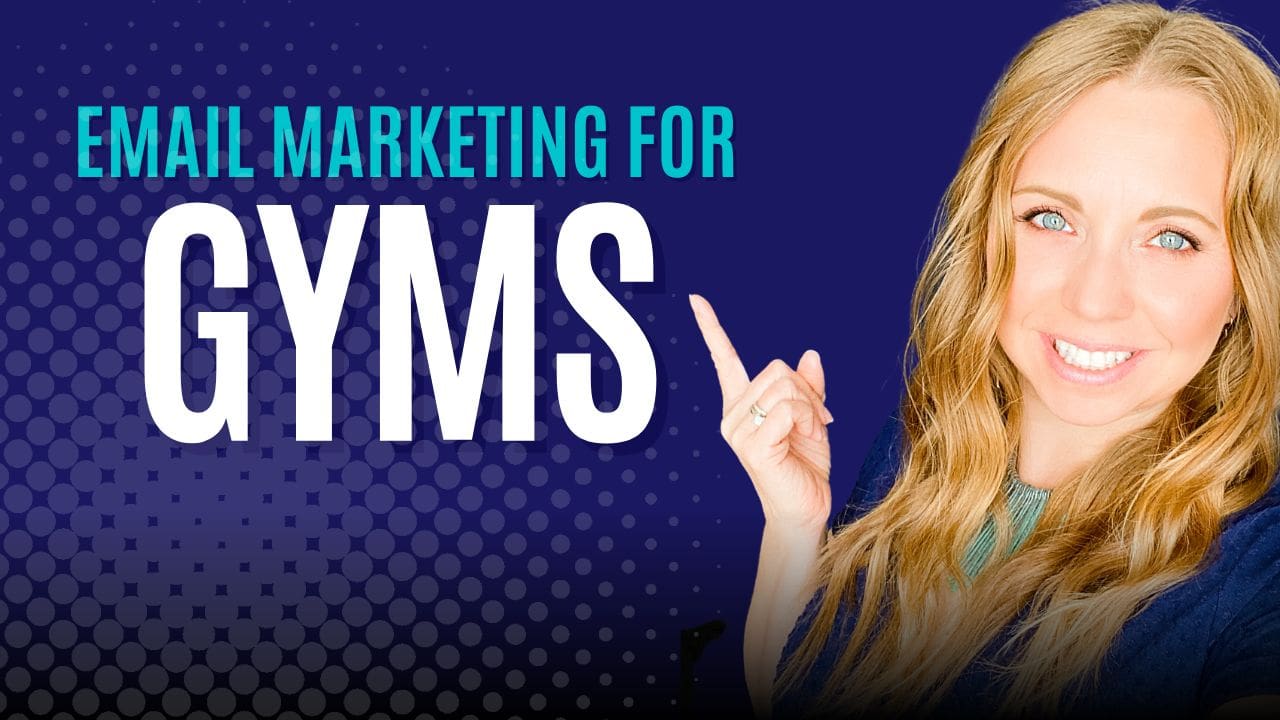How Many Marketing Emails Is Too Many? A Guide for Entrepreneurs

Have you ever felt overwhelmed by the amount of marketing emails in your inbox?
It’s easy to understand why – too many emails can be overwhelming, especially if they’re all coming from one business. But how do you know when “many” is actually too many? We’ll discuss this question and more as we explore what an appropriate frequency looks like for small businesses.
By understanding the right number of marketing emails to send, crafting compelling content, automating them effectively and timing them properly, you can ensure that your messages don’t become a nuisance but instead are well-received by customers who look forward to hearing from you!
Table of Contents:
- Establishing a Frequency
- Crafting the Content
- Automating Your Emails
- Timing is Everything
- Measuring Success and Optimizing Results
- How Many Marketing Emails FAQs
- Conclusion
Establishing a Frequency
When it comes to email marketing, establishing a frequency is key. It’s important to find the right balance between sending too many emails and not enough. Too few emails can lead to customers forgetting about your business, while too many can cause them to unsubscribe or mark your messages as spam.
Setting Goals
Before you start sending out emails, it’s important to set goals for what you want to achieve with each message. Are you trying to increase sales? Generate leads? Increase brand awareness? Knowing what your goal is will help guide the content of your emails and determine how often they should be sent out.
Analyzing Your Audience
Once you have an idea of what kind of content you want in your emails, it’s time to analyze who will be receiving them. What age group are they in? Where do they live? What interests do they have? All this information can help inform the timing and frequency of when you send out messages so that they reach their intended audience at the right time.
Testing and Adjusting
The best way to figure out how often people want or need updates from your business is by testing different frequencies and adjusting accordingly based on customer feedback or engagement metrics such as open rates or click-through rates (CTR).
Start off by sending one email per week, then gradually increase over time if needed until you find the sweet spot where customers are engaging with your content without feeling overwhelmed by too much communication from your business.
Establishing a frequency for your marketing emails is essential in order to effectively reach and engage with your target audience. Now, let’s look at how to craft the content of these emails so that they are as effective as possible.
Crafting the Content
Personalizing Your Messages
Personalization is key to making sure your emails stand out in the inbox. Using a reader’s name, referencing past purchases or interactions, and providing relevant content are all great ways to make an email feel more personal.
For example, if you know someone has recently purchased a product from you, sending them an email thanking them for their purchase and offering tips on how to use it can be much more effective than a generic message sent to everyone.
Writing Engaging Copy
Writing engaging copy is essential for getting readers to open and click through your emails. Start by writing with clarity and brevity; avoid using overly technical language or jargon that may confuse readers. Use actionable words like “discover” or “explore” that encourage readers to take action rather than just passively read the email.
Also consider adding humor where appropriate; this can help lighten up even the most serious topics while still conveying important information.
Visuals are powerful tools for capturing attention in emails, so don’t forget to include images or videos when possible. Images should be high-quality but not too large as they can slow down loading times; try using GIFs instead of static images whenever possible as these tend to draw more attention from viewers.
Videos are also great for conveying complex ideas quickly – just make sure they’re short enough that viewers won’t lose interest before reaching the end.
Crafting content for your marketing emails is essential to engaging with your target audience. It’s important to personalize messages, write compelling copy and utilize visuals and media that resonate with readers. Now let’s explore automating these emails for maximum efficiency.
Automating Your Emails
Choosing an Email Service Provider
Selecting the right email service provider is essential for automating your emails. There are many different options available, so it’s important to do your research and find one that meets your needs. Consider factors such as pricing, features, customer support, delivery rates, and user-friendliness when making a decision.
Creating Automated Workflows
Once you have chosen an email service provider, you can begin setting up automated workflows. This involves creating rules or triggers that will send out emails based on certain criteria being met.
For example, if someone signs up for your newsletter list they could be automatically sent a welcome message or additional information about the company. You can also set up automated reminders or follow-up messages after someone has completed a purchase or interacted with content in some way.
Automating your emails is an important part of any digital marketing strategy, but it’s essential to ensure that you are sending the right messages at the right time. In the next section, we’ll look at how to optimize your email timing for maximum engagement.
Timing is Everything
Scheduling for Optimal Open Rates
When it comes to email marketing, timing is everything. The best time to send emails depends on the type of content you’re sending and your target audience. Generally speaking, mid-week mornings are a good time to send emails since people tend to check their inboxes more frequently during this period. However, if you want higher open rates from certain demographics or regions, you may need to adjust your schedule accordingly.
For example, if you’re targeting millennials in North America then late afternoon/early evening might be better than mid-morning because that’s when they typically check their emails. Testing different times and tracking the results can help you find the optimal time for your campaigns.
Another way to increase engagement with your email campaigns is by leveraging holidays and events that are relevant to your target audience. This could include major holidays like Christmas or Thanksgiving as well as smaller events such as Mother’s Day or National Donut Day (yes, there really is one).
You can use these occasions as an opportunity to create special offers or promotions related to the event which will help draw attention from potential customers who may not have been interested otherwise.
Additionally, tying in seasonal trends into your messaging can also be effective at increasing engagement levels throughout the year – especially around key shopping periods like Black Friday/Cyber Monday or back-to-school season.
Timing is essential when it comes to email marketing. Knowing when to send emails can make all the difference in engagement and conversions, so be sure to schedule your messages accordingly. Now let’s look at how you can measure success and optimize results with your email campaigns.
Measuring Success and Optimizing Results
Measuring success is an essential part of optimizing results in email marketing campaigns. Evaluating open rates and clicks can give you valuable insights into how your emails are performing.
Open rate is the percentage of people who opened your email out of the total number sent, while click-through rate (CTR) measures how many people clicked on a link or call to action within the email. Knowing these metrics will help you understand which content resonates with your audience and what needs improvement.
A/B testing for improvement is another great way to measure success and optimize results in email marketing campaigns.
A/B testing involves sending two versions of an email to two different groups and comparing their performance metrics, such as open rate, CTR, unsubscribe rate, etc., to determine which version performs better. This allows you to refine your strategy based on data-driven insights rather than guesswork.
Finally, refining your strategy based on data-driven insights can help ensure that every campaign reaches its full potential. Analyzing key performance indicators such as open rates and CTRs will give you a better understanding of what works best for each segment or list, enabling you to make informed decisions about future campaigns.
Additionally, regularly monitoring trends in the industry will allow you to stay ahead of the curve when it comes to crafting effective emails that engage customers and drive conversions
How Many Marketing Emails is Too Many FAQs
How often is too often for marketing emails?
It depends on the type of email and your audience. Generally, sending emails more than once a week can be too much for most people. However, if you have an engaged audience that is interested in what you are offering, then it may be appropriate to send emails multiple times per week.
Keep in mind that the frequency should always match the value of your content and offers; if you’re sending too many emails with low-value content or offers, then it will likely turn off your readers.
How many marketing emails per week is too many?
It depends on the individual and their preferences. Generally, sending more than two marketing emails per week can be seen as too many. It’s important to find a balance between staying in touch with customers and not overwhelming them with too much content.
Sending one email every other week is usually enough to keep customers informed without bombarding them with messages. Additionally, it’s essential to ensure that all emails are relevant and of high quality so that they don’t become annoying or intrusive for recipients.
What is the 80/20 rule in email marketing?
The 80/20 rule in email marketing is a simple concept that states that 80% of your emails should be focused on providing value to the reader, while only 20% should be used for promotional purposes. This means creating content that educates, informs or entertains the reader rather than simply trying to sell them something. It also encourages marketers to create relationships with their readers by responding quickly and personally to any questions or feedback they receive. By following this rule, entrepreneurs can ensure their emails are well-received and have a positive impact on their business.
How many marketing emails can I send a day?
The number of marketing emails you can send in a day will depend on the email service provider you are using. Generally, most providers have limits to how many emails can be sent per hour or per day. It is important to read and understand your provider’s terms and conditions before sending out any marketing emails. Additionally, some countries may have laws that limit the amount of emails you can send in a given period of time. Make sure to research any applicable regulations before sending out any marketing messages. Ultimately, it is best to err on the side of caution and not send too many emails in a day.
Conclusion
In conclusion, it is important to remember that many marketing emails is too many. Too much email can lead to unsubscribes and a decrease in open rates. It’s essential for small businesses to establish an appropriate frequency of emails, craft engaging content, automate their emails when possible, time them correctly and measure the success of each campaign. By following these steps you will be able to ensure your email campaigns are effective and successful!
Are you an entrepreneur who is looking for help with digital marketing? Are you unsure of how many emails to send out in your campaigns? Let me help! I’m Torie Mathis and I specialize in teaching entrepreneurs the ins and outs of successful email marketing. With my expertise, we can create a plan that works best for your business goals while avoiding sending too many emails that may lead to unsubscribes or spam complaints.
Join the Smart Arsenal and let’s get started on crafting the perfect strategy for success!
About Digital Marketing Expert Torie Mathis

Torie hosts SMART AF, a show for non-techy entrepreneurs looking to grow their business, with her husband Sean and is the creator of SMART AF Magazine. Learn from Torie at the Smart Arsenal and on her channel.
What do you think? Let's talk! Leave a comment.

Is Your Marketing Taking You Away From The Things You Love?
What if you could get amazing results from your marketing without spending more time, more money, AND it was easy and predictable? Sean and I have suffered through it too, and we found the answer...
Hi! I'm Torie!

You don’t need crazy tech skills, buckets of cash, or dedicated staff to market your business. You don’t even need a lot of time.
What you need is to be SMART.
Smart Marketing For
Get Smart AF
DELIVERED TO YOUR INBOX
from your Digital Marketing Coach Torie Mathis!
Let's get SMART!
Let's Connect!

*Posts may contain affiliate links. If you use these links to purchase, I may earn a commission at no additional cost to you.


 I help entrepreneurs learn digital marketing.
I help entrepreneurs learn digital marketing.




I’ve always wondered, thank you this is helpful.